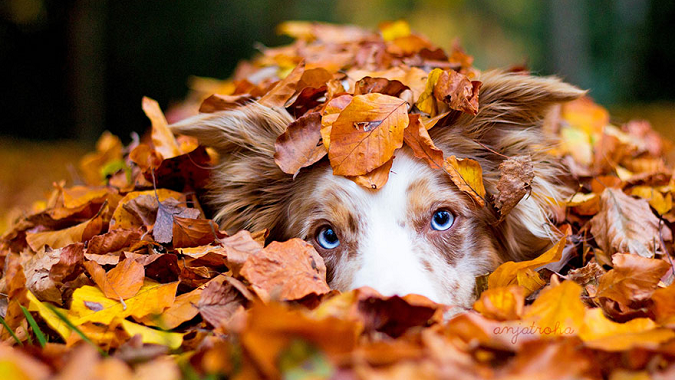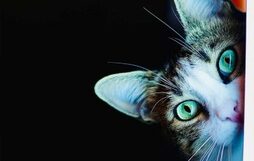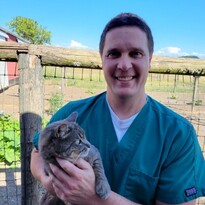Guest post by Dr. Don LeHoullier, DVM and Veterinary Expert for CareCredit Pet  Every season brings its own brand of fun for our furry friends – cue the slow-motion videos of dogs of all sizes and breeds gleefully diving into piles of newly raked leaves. And of course, there are those adorable photo ops of cats and dogs in Halloween costumes. But it’s important not to overlook potential dangers as the changing seasons bring us shorter days, colder nights, deep freezes, and winter storms. In addition to protecting our furry family members, getting ahead of the potential issues affecting pets this season can help alleviate financial anxiety. In fact, according to Synchrony’s Lifetime of Care survey, nearly half of respondents underestimated the lifetime cost of care for dogs and cats, which ranges from $15,000 to $55,000. This is significant, as 46% said they would experience financial anxiety if faced with a vet bill of $500. “More than 90 million U.S. homes include a pet, and you may be one of those pet parents with an emergency vet visit this fall” said Jonathan Wainberg, senior vice president and general manager, Pet, Synchrony. “Pet parents need to factor in planned AND unexpected costs into their monthly savings plans, so that they are prepared for any eventuality. By getting ahead of these bills, consumers can look into the available flexible payment solutions to manage the cost of care throughout their pet's lifetime.” To mitigate potential health issues and unplanned veterinary costs, pet parents should consider the following examples of the potential dangers facing pets this fall.  Wildlife Threats Many critters can pose severe risks to pets including ticks and snakes preparing for hibernation. While it’s important to protect pets from ticks year-round, they’re especially active in the fall, which is why it’s important to consider flea and tick prevention measures. To reduce the chances of stumbling upon a snake, do a quick sweep of your backyard before letting your pet outside. Snakes typically like to hide in piled up rocks or logs, tall grass and hollow tree knots, so be sure to check all potential danger zones. Food also attracts wildlife, including pet food, garbage and seed in bird feeders. Racoons are especially guilty of raiding food that’s been left out, and it’s not uncommon for them to be aggressive toward dogs and cats in their pursuit of a quick bite. Be sure to bring all food inside before going to bed for the night to keep your pets safe. Poisons and Toxins In general, it’s a good rule of thumb to closely supervise your pets when they’re outside. Keeping an eye on them will allow you to intervene quickly if they encounter toxins such as mushrooms and moldy walnut shells. While only 1% of wild mushrooms are toxic, ingestion can be life-threatening. And moldy walnut shells mimic metaldehyde poisoning, which can be devastating and expensive to get through. Unfortunately, rodent poisons become more common in the fall to keep critters at bay, which is why it’s important to be vigilant in protecting your pet from accidental exposure. This includes in the park, your neighborhood and even your home! And with Halloween right around the corner, be sure to keep decorations out of reach including toxic plants like chrysanthemums as well as mold on pumpkins, gourds, and hay.  Weather and Daylight Changes Cooler temperatures and longer nights can also impact pets’ behavior and well-being. Wearing reflective gear can help to keep your pet (and yourself) visible when taking late night strolls. It’s also important to keep pets warm as temperatures drop. And if it’s especially snowy, be sure to protect your pets’ paws with booties or salves. Finally, as with humans, pets’ allergies can be brutal in the fall – especially ragweed and mold. Keep an eye out for symptoms like excessive sheading, scratching and biting the coat or skin, and compulsive paw licking. Runaway Pets As awful as it is to think about, the above dangers can increase the risk of pets running away. Whatever you do, make sure your pets are microchipped and your contact information is updated. I can’t tell you how many unfortunate stories I’ve encountered with pets escaping and the owners aren't locatable. Similar to fireworks during the 4th of July, pets can become anxious when they hear constant doorbell ringing during trick-or-treating. With higher foot traffic on this spooky day, there’s a greater risk of escape. Protect them from scary ghouls, goblins and noises by investing in a thunder vest, which functions the same way as a baby swaddle. Gentle constant pressure calms the sympathetic nervous system and stimulates the Vagus nerve to de-activate the “fight or flight” response. Fall is a great time of year for pets – but only if the proper precautions are taken. A snuggle and treat usually help with common scares like the dreaded vacuum and car rides, but pets don’t do well with seasonal change. At the beginning of each season, talk to your vet about how you can mitigate any potential harm from befalling your beloved pet.  Written by: Dr. Don LeHoullier, DVM and Veterinary Expert for CareCredit Pet Don LeHoullier is a veterinarian and owner of Countryside Veterinary Clinic in Jefferson, OR. In this role he works on a variety of animals ranging from dogs and cats to the occasional farm animal. Dr. LeHoullier has a Certificate in Veterinary Technology, received a Bachelor of Science in Animal Science from Oregon State University College of Agriculture and graduated from Oregon State University College of Veterinary Medicine with a Doctorate degree in Veterinary Medicine. Dr. LeHoullier took a particular interest in pain and analgesics, and advanced anesthesiology. He also spent time abroad, training in Australia and New Zealand. In 2002, Dr. LeHoullier researched the effects of photodynamic therapy for the treatment of equine sarcoids in vivo and in vitro as part of the Merck-Merial Research Program. In the same year, he also assisted in a project studying the vasoconstrictive effects of ergot alkaloids on bovine blood vessels in vitro. In his free time, Dr. LeHoullier enjoys spending time outdoors, building PCs and gaming, and growing exotic chilis.
0 Comments
|
AuthorDr. Sarah Wooten is a well known international influencer in the veterinary and animal health care spaces. She has 16 years experience in private practice and over 10 years experience in veterinary media work, and is a certified veterinary journalist. Archives
October 2023
Categories |
The information provided by Sarah J. Wooten, DVM, Inc. (https://www.drsarahwooten.com/ (the our mobile application our mobile application our mobile application THE SITE OR OUR MOBILE APPLICATION THE SITE AND OUR MOBILE APPLICATION THE SITE AND OUR MOBILE APPLICATION THE SITE AND OUR MOBILE APPLICATION
AFFILIATES DISCLAIMER
Clickbank
ShareASale
We are a participant in the Amazon Services LLC Associates Program, an affiliate advertising program designed to provide a means for us to earn advertising fees by linking to Amazon.com and affiliated websites.
TESTIMONIALS DISCLAIMER
The Site may contain testimonials by users of our products and/or services. These testimonials reflect the real-life experiences and opinions of such users. However, the experiences are personal to those particular users, and may not necessarily be representative of all users of our products and/or services. We do not claim, and you should not assume, that all users will have the same experiences. YOUR INDIVIDUAL RESULTS MAY VARY.
The testimonials on the Site are submitted in various forms such as text, audio and/or video, and are reviewed by us before being posted. They appear on the Site verbatim as given by the users, except for the correction of grammar or typing errors. Some testimonials may have been shortened for the sake of brevity where the full testimonial contained extraneous information not relevant to the general public.
The views and opinions contained in the testimonials belong solely to the individual user and do not reflect our views and opinions. We are not affiliated with users who provide testimonials, and users are not paid or otherwise compensated for their testimonials.
The testimonials on the Site are not intended, nor should
they be construed, as claims that our products and/or services can be used to
diagnose, treat, mitigate, cure, prevent, or otherwise be used for any disease
or medical condition. No testimonials have been clinically proven or evaluated.
This disclaimer was created using Termly's Disclaimer Generator.

 RSS Feed
RSS Feed